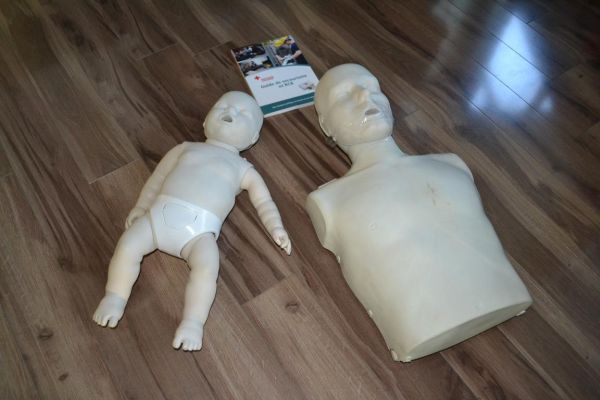A febrile seizure is a convulsion in a child that is caused by a spike in the body temperature such as during an infection. A child with febrile seizure can be alarming, and the few minutes it lasts can be an eternity. Febrile seizure is a distinctive response of the brain of the child to fever during the first day of the fever. Febrile seizure does not indicate any problems. You can learn how to properly manage this condition by enrolling in a class on first aid today.
Symptoms of febrile seizure
Symptoms of febrile seizure can be mild to severe shaking or muscle tightening. A child with febrile seizure can have a fever higher than 100.4 F or (38.0 C), he/she shakes and jerks the arms and legs and the child can lose consciousness.
Classification of febrile seizure
Febrile seizure can be classified into simple or complex. Simple febrile seizures are the most common type and last from seconds to 15 minutes and they do not recur within a 24 hour period.
Complex febrile seizures lasts longer than 15 minutes and recurs more than once within 24 hours and only one side of the child’s body is affected. Febrile seizure that happens within 24 hours of the onset of fever can be a sign that the child is sick.
A febrile seizure that lasts more than 10 minutes and accompanied by a stiff neck, vomiting, difficulty in breathing and extreme sleepiness requires medical care as soon as possible.
Causes of febrile seizure
- A high body temperature
- A viral infections such as flu and roseola
- Some childhood immunizations such as for tetanus, diphtheria, pertussis or measles-mumps-rubella vaccinations where the child can develop a fever after a vaccination and sometimes the fever can cause the seizures.
Treatment and home remedies
- Stay close to the child.
- Place the child on his/her side on a flat surface where he/she cannot fall
- Loosen the clothing of a child if it is tight or restrictive
- Remove hard and sharp objects near the child
- Avoid letting the child eat
- Time the seizure
Prevention of febrile seizures
- Know the proper dosage for fever medication, especially for children who are growing up rapidly.
- Maintain the fever of the child below 102 degrees because febrile seizure happens if the temperature is above this range.
- Check on the child’s temperature regularly if he/she is showing any signs of sickness.
- Give the child his/her medications for reducing the fever since this prevents the fever from rising up when the medication starts to wear off.
- Place the child in lukewarm water in order to control the fever. Another measure is to use a wet towel and place it under the armpit, on the forehead and behind the neck of the child.
Some tips and warning
- Most febrile seizures happen between ages 6 months to 3 years and rarely happen after the child reaches 5 years old.
- Once a child has experienced a febrile seizure, he/she can likely experience another attack.
- Avoid placing cold water or ice compress on a child with fever since a drop in the body temperature in fever can cause a febrile seizure.

